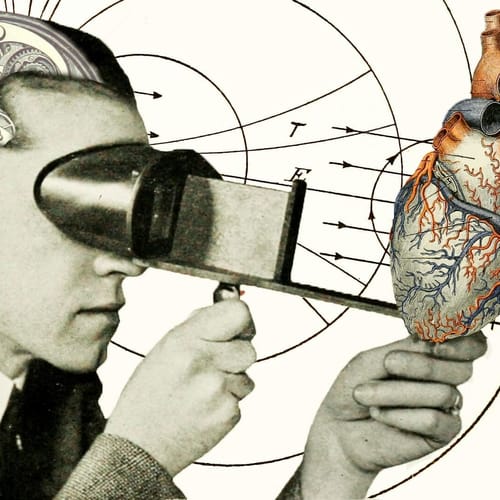The nervous system is composed of neurons which are specialized cells with the capacity to receive and transmit various electrical and chemical signals, creating a unique network. A neuron can be somewhat compared to an electrical cable, transmitting a signal from one place to the other. The brain is, by far, the most complex organ of the human body, essentially comprised of these neurons. This complex structure is the seat of intelligence, the interpreter of the senses, the initiator of body movement, and the controller of our behavior.
The brain is the source of all the qualities and defects that define one’s humanity. All actions involving the perception, thought and responsiveness of an individual are based on the electro-chemical activities within the brain. All activity and functions made by the nervous system—ranging from a simple motor reflex to more complex activities such as constructing a new memory or making a decision or deduction—require neurons to communicate with each other.
Deciphering the ABC’s of neuro-communication

While humans use words and body language to communicate, neurons use electrical and chemical signals. The electrical signals can be defined as oscillations in voltages known as action potentials, capable of transmitting information from one neuron to the other. On the other hand, chemical signals are conducted by neurotransmitters. These are chemical messenger compounds released from one neuron as a result of voltage oscillations and are transferred to neighboring neurons through connections called synapses, leading to more voltage oscillations and the release of more neurotransmitters. Both cause rapid and temporary changes in the brain to initiate an action.
Contemporary neuroscience has been suggesting the existence of fundamental algorithms by which all sensory transduction is translated into the intrinsic brain-specific codes. According to Michael A. Persinger’s study, the definition of these basic algorithms, by which all brains are conducted and operate, can be a crucial pathway to define human behavior and its actions.
Simply put, the brain (A) first receives inputs from the five physical senses, (such as touch, sight, hearing, smell, and taste); (B) then processes them (which is related to the formation of memories and emotions) and; (C) finally creates outputs (including speech and movement), and this could be considered an algorithm, being A + B = C.
Different origins, similar patterns, unique individual

Persinger has also described that there are differences between individuals that can be determined by the human genome. For example, an individual with an African origin will have a different genetic profile when compared with one from an Asian background. However, a basic pattern of information and structure within brain space must still exist.
The author demonstrated that the definition of these algorithms and the extrapolation to all individuals is possible since the daily administration of any psychotropic drug can generate verifiable and predictable behavioral changes in different individuals. For example, antidepressants or anxiolytic compounds can induce general mood alterations, vigilance, and positive or negative thoughts—being all these changes similar within millions of different human brains, regardless of their genetic or cultural history.
Persinger has also suggested that the identification of these algorithms can also allow direct access to the most complex neuro-cognitive processes associated with the sense of self (i.e., refers to the perception of all characteristics that define a specific individual), human consciousness, and episodic memory. This can be defined as the set of past personal experiences that occurred at particular times and places that, ultimately, lead to the characterization of each person.
Putting the cranio-algorithm to the test

With these assumptions, multiple questions arise. With the definition and implementation of these algorithms, can we influence, alter, and/ or predict human behavior? Can we use these algorithms to substitute some neurologic drugs and alter the predisposition of an individual to develop neurologic diseases?
By trying to define these algorithms, Persinger and collaborators postulated that a transcranial magnetic stimulation could be used, where a series of precise magnetic pulses would be performed in specific areas of the brain, leading to the activation of those regions. To prove this Fleming, Persinger, and Koren used an experimental approach with animal models. They used healthy rats as controls, and rats with damages in one specific region of the brain (the limbic thalamic area). They exposed these rats to several experimental conditions such as without any treatment, treated with morphine (an opioid analgesic drug), and submitted to magnetic pulses.

The results showed that a magnetic pulse field (applied for one second every four seconds) elicited a more prolonged and larger analgesic effect compared with the highly used and effective treatment with the opioid morphine. These effects were so evident that the authors suggested that magnetic pulse field treatment could be applied as a clinical approach.
The authors also suggested that during the application of these magnetic pulses, there is a release of endogenous analgesic compounds that could have an equal or better effect than some analgesic medications. Another study also corroborated this finding showing that magnetic pulses applied to the limbic structure of the brain can also induce epileptic episodes in a similar way when medications are used.
Furthermore, other evidence has shown that when a direct induction of random electrical sequences is applied within the region of the hippocampus, this can either promote or attenuate epileptic seizures. Nowadays, the definition of these algorithms and their application could prove to be both beneficial and harmful in the world where we live.
On one hand, these algorithms can be used to predict how a particular individual would react to a certain medication before ever taking it, knowing beforehand if treatment X, Y, or Z would be more or less beneficial. One could also predict an individual’s talent for specific professions, placing people in the best possible career path and “optimizing” their role in our society. However, by knowing these algorithms, one could also predict and manipulate human behavior. This could raise serious ethical dilemmas where manipulation could be a tool for causing harm or empowerment.
